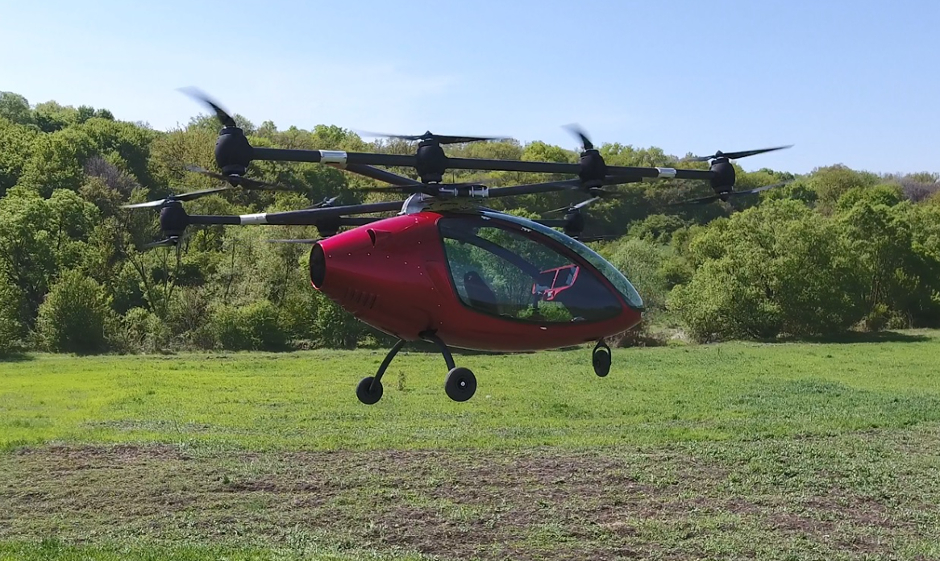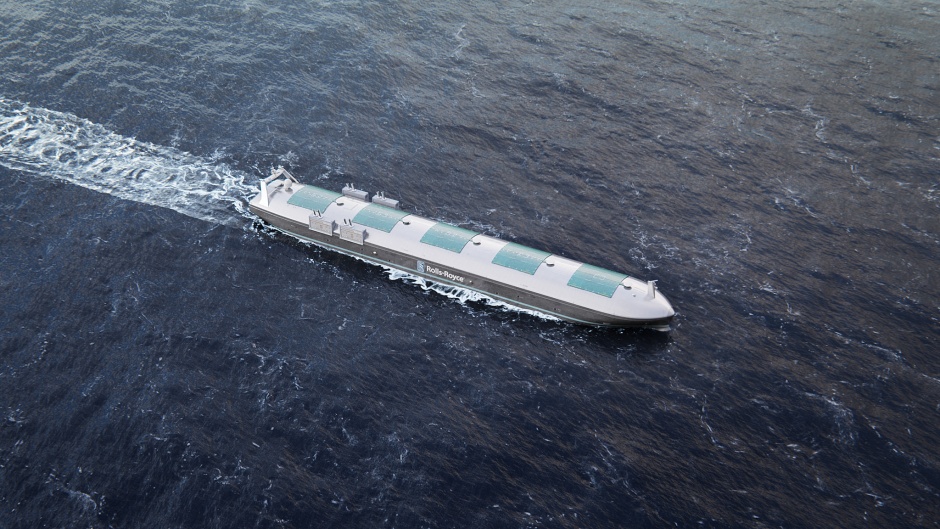 Jason Ford, news editor
Jason Ford, news editor
Public fascination with autonomous and unmanned systems tends toward eye-catching cars or flying taxi services, but it is unmanned freight services that are likely to have greater economic utility.
Two announcements from last week point to a future where people will be able to use autonomous aerial vehicles as a means of personal transportation.
First came news from Dubai where the first test flight of an autonomous air taxi had taken place.
During the trial a two-seater autonomous air vehicle (AAV) flew to an altitude of around 200m and stayed in the air for around five minutes.
According to our report, the Volocopter drone is around 2m high and driven by 18 individual battery-powered rotors housed in a 7m diameter rotor rim above the cockpit. Able to hold two passengers, the aircraft has a claimed top speed of 100km/h and a maximum flight time of around 30 minutes.
This was closely followed by Passenger Drone launching what it claims is the world’s most advanced autonomous manned aerial vehicle.
The company’s eponymously-named VTOL aircraft is operated via a touch-screen, allowing passengers to input their destination and then be flown by the drone at speeds of up to 70km/h.
The vehicle’s structure is made of carbon fibre composites and claimed industry advantages include the redundancy of 16 individual 5kW motors, quadruple redundant stability system, plus custom designed avionics.

A spokesman from the company added that the rating on each motor is 35-40kg of thrust per motor depending on the propeller used. The aircraft is almost completely wireless too. With the exception of the main power cables, there are no wires in the aircraft; the connection between the control joystick, main control CPU, engine controllers and the navigation screens is communicated optically.
“Over time, VTOLs have the potential to become the go-to form of daily transportation surpassing that of owning a car,” the company said. “Air travel has historically been seen as an expensive proposition, due in great part to the small volume of production seen in today’s aerospace industry. Mass production of the Passenger Drone could potentially revolutionise traditional notions of transport.”
The company plans to build up to five aircraft for testing purposes and certification
in the next 3-4 months.
Passenger Drone specs:
Empty Weight (including batteries): 240kg (520lbs)
Maximum Take Off Weight: 360kg (800lbs)
Maximum Thrust: 560kg (1230lbs)
Maximum Payload: 120KG (270lbs)
Maximum Speed: 60-70km/h (45mph)
Flight time: 20-25 mins (without range extender)
Dimensions (L x W X H): 4200mm x 2300mm x 1800mm
Two Passenger Seats
16 Engines and Propellers
Peter Delco, a member of the Passenger Drone development team, told Digital Trends that the aircraft also has the potential to deliver payloads of up to 200kg, which is considerably more than the proposed deliveries of 2kg by Amazon. In a similar development, Airbus Helicopters and SingPost aim to roll out a trial at the National University of Singapore in early 2018 that will see autonomous drones flying pre-defined routes to deliver packages weighing less than 4kg.
Whilst stopping short of predicting fleets of autonomous cargo-carrying aircraft, there are those within the sector looking seriously at unmanned cargo aircraft (UCA) for freight.
Rolls-Royce is already working on unmanned – and potentially autonomous – vessels with freight carrying capabilities, and aerospace has the potential to follow suit in the unmanned arena.

This is the overarching theme of the 5th Unmanned Cargo Aircraft Conference, which takes place next month in Italy. Like Rolls-Royce, the organisers recognise the gains that can be made when humans are removed from design requirements. According to the Platform for Unmanned Cargo Aircraft (PUCA), a UCA can ‘be built more cheaply than a manned aircraft (there is no need for life support systems etc.) and fuel consumption can be reduced by opting for a relatively low cruising speed. Higher productivity is possible because…crew flight time limitations and the need to return crews to their operating base are absent.’
The USP of UCA is particularly relevant with small aircraft, where crew salaries account for a relatively large percentage of operating costs.
‘This means that UCA potentially do not merely compete with existing air transport assets, but can also open new markets,’ the organisers add. ‘Worldwide there are still many areas that are deprived of high-quality transport because demand is uneconomically low or because geographical barriers limit the efficiency of ground infrastructure.’
They acknowledge that UCA won’t be able to compete with manned freight carriers such as the Boeing 747F but that they could prevail in markets that support only small volumes of cargo. UCA with a cargo capacity of 2 to 20 tonnes, a range from 1000- 10,000km and a cruising speed of about 450 km/h are deemed best platforms with near-term potential.
The Unmanned Cargo Aircraft Conference takes place in Rivalta di Torino on November 23, 2017.





Swiss geoengineering start-up targets methane removal
No mention whatsoever about the effect of increased methane levels/iron chloride in the ocean on the pH and chemical properties of the ocean - are we...